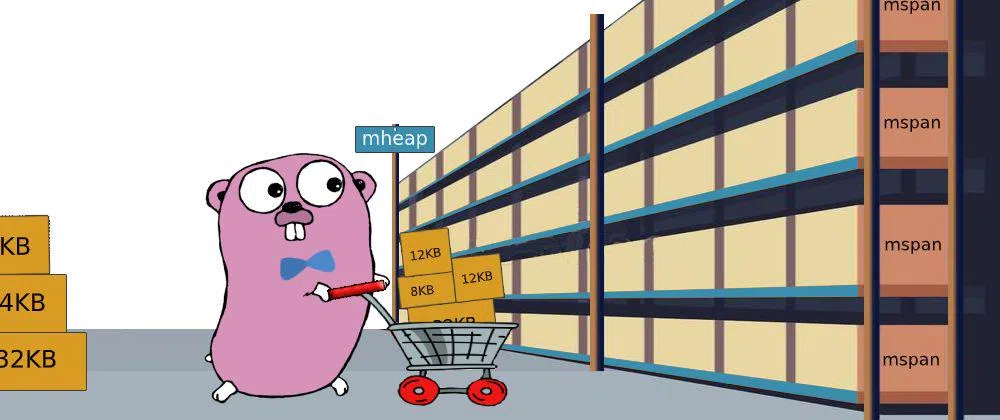Kiểm tra xem biến nào sẽ escape to memory
Escape to memory là thuật ngữ chỉ một biến sẽ được cấp phát ở vùng nhớ heap thay vì vùng nhớ stack. Những trường hợp nào biến sẽ Escape to memory? Ví dụ này giúp bạn hiểu rõ hơn cơ chế quản lý bộ nhớ stack và heap trong Golang. Nó không giống với C/C++ mà có sự chọn lựa tối ưu khi tạo một biến ở heap. Link mã nguồn minh hoạ bài viết này
How do I know whether a variable is allocated on the heap or the stack?
From a correctness standpoint, you don't need to know. Each variable in Go exists as long as there are references to it. The storage location chosen by the implementation is irrelevant to the semantics of the language.
The storage location does have an effect on writing efficient programs. When possible, the Go compilers will allocate variables that are local to a function in that function's stack frame. However, if the compiler cannot prove that the variable is not referenced after the function returns, then the compiler must allocate the variable on the garbage-collected heap to avoid dangling pointer errors. Also, if a local variable is very large, it might make more sense to store it on the heap rather than the stack.
In the current compilers, if a variable has its address taken, that variable is a candidate for allocation on the heap. However, a basic escape analysis recognizes some cases when such variables will not live past the return from the function and can reside on the stack.
Sử dụng lệnh go build -gcflags -m để phân tích xem biến nào ở trường hợp nào sẽ escape to heap.
Kiểm tra Escape to Heap qua các trường hợp cụ thể
Phát biểu của Golang team tương đối chung chung, do đó tôi tạo các ví dụ tình huống khác nhau để kiểm tra khi nào, một biến sẽ escape to heap (chuyển lên vùng nhớ heap) thay vì được lưu ở stack
Các tham số value hay pointer khi truyền vào tham số
interface{}sẽ được escape to heap
Trong ví dụ này biến nào truyền vào tham sốa interface{}sẽ escape to heapfunc GetType(a interface{}) string { return reflect.TypeOf(a).String() } func InterfaceArgumentEscapeToHeap() { tom := Person{Name: "Tom", Age: 18} if GetType(tom) == "*main.Person" { //tom escapes to heap fmt.Println("tom is Person") //"tom is Person" escapes to heap } }Cấp phát slice kích thước đủ lớn.
Ví dụ cấp phát 10,000 phần tử thì chuyển lên heap
make([]Person, 10000) escapes to heapnhưng nếu cấp phát 1,000 thì không cần chuyển lên heap
make([]Person, 1000) does not escapeKhác với C/C++ keyword
newcấp phát vùng nhớ trên heap, nhưng ở Golang lại thường cấp phát luôn trong stacknew(Person) does not escapenếu con trỏ chỉ dùng bên trong một hàm và không trả về.alice := new(Person) alice.Name = "Alice" alice.Age = 21Nếu dùng
newcấp phát một biến trong hàm để trả về thì biến đó sẽ escape to heapfunc makeAPerson(name string, age int) (person *Person) { person = new(Person) //Escape to heap person.Name = name person.Age = age return }Trả về slice từ hàm, thì slice đó escape to heap
func ReturnASlice(size int) (result []string) { result = make([]string, size) //make([]string, size) escapes to heap return }Trả về mảng từ hàm, thì array đó không escape to heap
func ReturnArrayFromFunc() (seasons [4]string) { seasons = [4]string{"Spring", "Summer", "Fall", "Winter"} return }Trả về một struct từ hàm, thì struct đó không escape to heap
func ReturnAStructFromFunc() Person { person := Person{Name: "Cường", Age: 46} return person //does not escape to heap }Trả về một pointer struct từ hàm, vùng nhớ struct đó được tạo ra ở heap
func ReturnPointerStructFromFunc() *Person { person := Person{Name: "Cường", Age: 46} //moved to heap: person return &person }


Bình luận